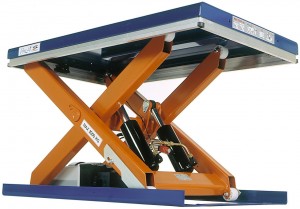 Fatigue, stress and injury are the enemy of any efficient and profitable operation. When these increase, the result is often lost productivity and increased employee turnover, both of which affect the bottom line.
Fatigue, stress and injury are the enemy of any efficient and profitable operation. When these increase, the result is often lost productivity and increased employee turnover, both of which affect the bottom line.
That’s why many manufacturing and warehousing management teams are now looking to improved ergonomics to relieve stress and increase comfort for workers.
Improve Ergonomics, Increase Profits
Lance Reese — director of technical solutions for order fulfilment at Intelligrated, a conveyor and sortation system manufacturer based in Woodridge, Illinois — said improved ergonomics is rapidly becoming a critical issue within the materials handling industry.
“Customers are giving more thought to ergonomics than they did even five years ago,” Reese told Modern Materials Handling. “In years past, it was not much of a consideration at all. But in most projects we see now, there is a focus on ease of tasks, organization, effective communication and basic comforts.”
Gone are the days of crowded workstations, heavy lifting and repetitive movement. Thanks to an aging and more diverse workforce, there is a better understanding that a more ergonomically optimized workplace results in a more efficient and, ultimately, more profitable business operation.
More Comfort, Less Downtime
When designing processes, more attention is now being paid to such things as gender, weight, age and any special needs individual workers may have.
For example, if the driver of a forklift is required to back up frequently, the constant twisting around could result in long-term neck and back injuries. A better ergonomic solution might be to install a swivel seat and a rear grip with a horn.
Or if the forklift is frequently used to lift loads higher than 30 feet, a fork-mounted laser or camera could help operators put and pull loads without constantly having to crane their necks to watch what they are doing.
“Good Business Sense”
Using equipment that improves ergonomics just makes good business sense, said Mike Shannahan, owner of Cynergy Ergonomics, the St. Louis, Missouri, based manufacturer of ergonomic lifts and other equipment.
“Some companies use a couple of young, strong people in a low-paid job, and the policy is to just burn through them in six months,” Shannahan said. “A company with that mentality won’t invest in ergonomic solutions, but seems to ignore the cost of training someone every six months. The companies with 30-year veterans always make the investment, and if you prevent one worker from blowing out his rotator cuff, you’ve paid for it all right there.”
Making lift trucks more user-friendly can pay for itself in increased productivity, fewer injuries, and reduced employee turnover and training costs.
Niels Ostergaard, a manager at Toyota Materials Handling USA, said forklift manufacturers are developing ergonomically improved forklifts in response to customer demand.
“There’s been a pretty major change and advance in lift truck ergonomics over the last 10 years,” Ostergaard said. “I attribute it to businesses beginning to recognize that the operator compartment is their office. That’s where they conduct their business. Ergonomics is important both for productivity and a happier, more content associate. I’m convinced that it does reduce turnover.”
